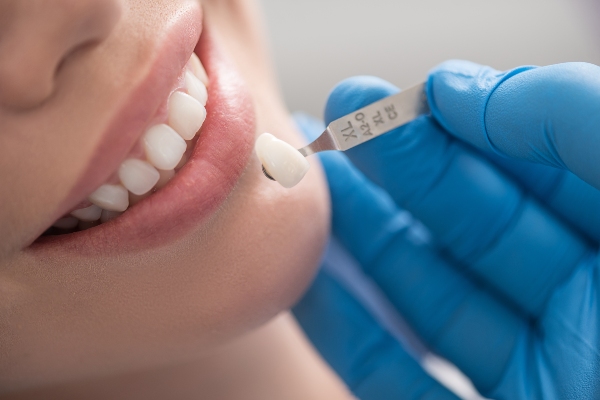What Is Restorative Dentistry?

Restorative dentistry is the process of restoring damaged or missing teeth. You have had a form of dental restoration if you have ever had bridges, crowns, or fillings. Dentists want to improve or maintain your smile while preventing future dental complications. Restorative procedures need care and attention to detail. Therefore, only qualified dental professionals should perform them. You should always consult with your dentist about restorative dentistry options.
Examples of restorative dentistry
Sometimes, patients are confused by the terminology in the dental field. What sounds like something complex might be quite common. One example of this is restorative dentistry. Simple procedures, like fillings, are a form of dental restoration. Many have had them throughout a lifetime, and usually more than once. The primary restorative options that dentists use are bridges, crowns, fillings, and implants.
When dentists install a filling, they restore a tooth by replacing decay with a hardened substance. Crowns are also common and are covers applied over a tooth to preserve its structure. Bridges and implants are for more severe cases. These restorations are reserved for people with missing teeth. Bridges fill the gap between a missing tooth and a present one. On the other hand, implants are tooth replacements.
Who needs tooth restoration?
Everyone is likely to need restorative dentistry at some point in their life. The reality is that teeth begin to decay over time, even with good oral habits. Symptoms of decay can speed up if individuals do not exercise such practices. Additionally, a sudden accident can make good dental habits inconsequential. For these reasons, having a family dentist is always a good idea.
Sometimes, a need for restoration is not about hygiene but genetics. Some people are born with amelogenesis or ectodermal dysplasia. Others have a higher propensity for bruxism (teeth grinding). Bruxism is something dentists can treat but not cure. Dentistry is a combination of things inside and outside of people’s control.
Habits to assist with restorative dentistry
Everyone is going to need restoration at some point in life. Yet, it is ideal to limit the number of times it is necessary. Furthermore, patients need to maximize the restorative treatments. People should exercise good dental habits, including oral hygiene and proper eating techniques. Both children and adults should brush their teeth twice per day. In addition, the use of floss and antibacterial mouthwash can be helpful.
The right candidates
Restorative dentistry can update one’s smile. A person may need this treatment for either functional or cosmetic reasons. The dentist will help the patient get the right type of restoration that will suit the person’s needs. Ideal candidates for restorative dentistry are people who are not happy with their current dental health. More dental damage leads to more negativities, such as the following:
- Social isolation
- Low self-esteem
- Depression
- Anxiety
- Difficulties advancing in school or at work
The benefits
A dental bridge can replace a tooth in the form of a pontic. This type of restorative dentistry bridges a gap left by the lost tooth. The abutment teeth on each side of the gap support the pontic. Dental crowns will go on the abutment teeth. This type of work will prevent the pontic from drifting.
Cracked, stained, and chipped, as well as oddly shaped and unevenly spaced teeth, can improve with dental bonding. Repairing the damaged teeth can prevent more dental issues, such as decay. The dentist will use composite resin to repair the tooth. Matching the bonding material’s color to the color of the natural teeth will lead to an undetectable restoration.
A dental crown or a cap can cover the damaged tooth. This type of restorative dentistry can cover the tooth that went through root canal treatment. It can hold the weakened tooth together. A crown can also protect the tooth from more damage or decay. Partial or full dentures can replace a series of teeth in a dental arch. It can replace teeth in the upper or lower arch.
Restorative dentistry can improve the way a person speaks and eats. It can protect the tooth from shifting into the dental gaps left by tooth loss. This treatment can disperse one’s bite force, which prevents jaw pain. It can also align the bite for better eating.
Meeting with a dental professional
You will not always know whether you need tooth restoration or not. Toothaches are common indicators of such a need. Still, there are times when severe decay goes undetected by a patient. You should schedule regular cleanings with your local dentist. You will both prevent the need for restorative dentistry and catch decay in its earliest stages. The more you stay on top of your dental health, the less expensive it will be and the healthier you will be.
Request an appointment here: https://www.tanqueverdedental.com or call Oro Valley Family Dentistry at (520) 833-5261 for an appointment in our Tucson office.
Check out what others are saying about our dental services on Yelp: Restorative Dentistry in Tucson, AZ.
Related Posts
If you are wondering about restorative dentistry, you are not alone. Lots of people have similar questions about the subject of restorative dental procedures. When people ask a question several times, it becomes a frequently asked question or FAQ. Dental professionals answer patients’ questions on a public forum (like a website). That makes it easier…
The goal of restorative dentistry is to repair a smile that is damaged to achieve optimal oral health, appearance, and function. This review discusses restorative dentistry and highlights the various services that this branch of dentistry includes.Learning more about the benefits of restorative dental services can help you determine how a restorative dentistry visit can…
A smile makeover can enhance the way your gums and teeth look. This process could even improve the function of your mouth. One of the treatments in this procedure is gum contouring. If you want to know what gum contouring does for your smile makeover, here are the details.There are cases when the gums need…
When teeth become damaged, stained, or unsightly, a smile makeover can help you enjoy a beautifully restored smile. Many treatments improve not only the appearance of teeth but their function as well. It is important to have damaged teeth repaired promptly to avoid unwanted side effects, such as decay, infection, or tooth loss.There are many…


